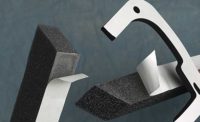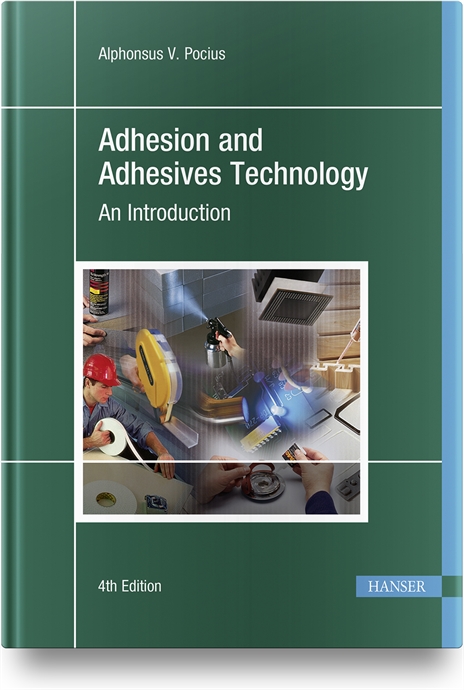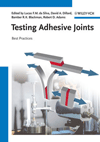Today’s manufacturer strives to make devices lighter and smaller, and to make the manufacturing process more efficient and cost-effective. These goals, combined with a boom in polymer chemistry in the latter half of the 20th century, have fueled exceptional growth in the adhesives industry, particularly in the development of pressure-sensitive adhesives (PSAs).
One of the best examples of the increased demand for adhesive assembly is in the automotive industry. As little as 40 years ago, automobiles were assembled almost exclusively using mechanical fasteners and welding. These vehicles were very heavy and did not use fuel efficiently. In today’s automobile, approximately 70 pounds of adhesives replace more than 200 pounds of mechanical fasteners, decreasing over-all vehicle weight and increasing fuel efficiency.
PSAs are easy to apply, which can speed the assembly process. They can be applied to one surface and left for future application to a secondary surface. PSAs weigh less than most mechanical fasteners and distribute stress better over a wider area than fasteners, which focus stress on one particular place.
Adhesives can seal a joint while they bond substrates together. PSAs can dampen vibration and shock, reduce noise and fill gaps. Because these materials bond between substrates, they produce an assembly with a smooth surface, without the protruding heads seen with mechanical fasteners.
Adhesives offer improved dimensional stability over fasteners. PSAs can be cut into intricate shapes with minimal waste. They are safe to use and provide lower overall assembly costs than fasteners.
Adhesives do have several limitations. The strength of an adhesive bond is directional. Adhesive bonds have high shear, compression and tension strengths, but low peel and cleavage strength. Adhesives require a clean surface to adhere well long-term, and their performance may be compromised on irregular surfaces. PSAs operate effectively over a limited temperature range, from approximately -40 to 500 F. Finally, adhesives can be more expensive than mechanical fasteners, and no universal product exists that works in all bonding applications.
Adhesive Chemistries and Properties
PSAs are available in three main types of chemistries: rubber-based, acrylic and silicone. Each has its own benefits and limitations. For example, a rubber-based product adheres to a wider variety of surfaces than an acrylic product. However, the rubber-based PSA has a much narrower service temperature range and has poor resistance to ultraviolet light in outdoor applications.Adhesive performance within each of the families can vary dramatically. Operating conditions in the PSA’s end-use environment help determine which chemistry to use. Rubber, acrylic and silicone PSAs all perform well in indoor applications. In applications with temperature extremes, silicone PSAs perform the best. Acrylics represent a happy medium between silicones and rubber-based products for both cost and properties.
When using PSAs for assembly, the bond joint must be designed so that exposure to peel and cleavage forces are minimized, while shear, compression and tension are maximized. Because low surface-energy materials, such as fluoropolymers and polyolefins, are difficult to bond using any adhesives, they should be avoided.
Peel, tack and shear properties are interrelated and tell the most about a PSA. Tack is an indicator of how quickly the PSA sticks to surfaces. Two of the most common ways to test an adhesive’s tack are the rolling ball test and the probe test. In the rolling ball test, a piece of tape is placed, adhesive side up, on a flat area in front of an inclined plane. A stainless steel ball of a known weight is then rolled down the plane and into the adhesive. The distance the ball travels indicates the adhesive’s tack. The longer the ball rolls, the lower its tack. In the probe test, a PSA sample is laid on a table. A probe is lowered onto the exposed adhesive and immediately removed. The force required to remove the probe indicates the PSA’s tack level. The higher the force required, the higher its tack.
Peel adhesion is a good indicator of how well a PSA will bond to a substrate. In the peel adhesion test, a PSA is applied to a test panel under controlled pressure for a defined time. The PSA is then peeled off the panel at either a 90- or 180-degree angle, and the force required to remove the adhesive is measured.
A shear strength, or holding power, test indicates the internal strength of the adhesive layer itself. The test involves placing a PSA onto a test panel and hanging a weight onto the tape so that a downward force is applied to the bond area. A known weight and a bond area are used, and the test result is given in units of time. The longer the weight hangs without the bond failing, the higher the shear strength of the adhesive.
An adhesive with a high peel strength generally has low shear strength. Tack and peel adhesion are interrelated, with some exceptions. Higher shear products tend to have lower peel characteristics and lower tack. Understanding which of these three properties is the most important for a particular application is critical to selecting a PSA.
Choosing PSA Construction
The right adhesive chemistry for an application is critical, but it’s not the only choice that must be made when selecting a PSA. The construction of the PSA is important, too. There are three basic types: transfer films, double-coated tapes and single-coated tapes. Most of these constructions require one or more release liners.A transfer film is an unsupported adhesive layer packaged for use on one or more release liners. These products are available with one release liner in roll form or two release liners in sheet form. Adhesives presented as transfer films do not have any carrier or support, but someArial contain glass fibers to give the film more integrity and make it easier to die-cut.
A double-coated tape is made of a carrier, or support, coated on both sides with an adhesive. The support varies depending on the application. Different adhesive chemistries may be used on each side of the carrier. For example, one side may offer a permanent adhesive, while the adhesive on the opposite side may be removable. The most common carriers are foam, film, paper and metal foil. Double-coated tapes are almost always found with one release liner in roll form or two release liners in sheet form.
A single-coated tape has adhesive on only one side of a carrier or backing. Backings can be made of soft PVC, polyethylene, aluminum, cellulose, cloth, foam and other materials. Single-coated products are available with or without a release liner.
Selecting between single-coated tapes, transfer films and double-coated tapes is an easy decision. Single-coated tapes are generally used for four purposes: to stick to another substrate (a bandage adhering to skin); to wrap around something (aluminum tape around duct work or PVC tape around a bundle of wires); to protect a surface (masking tape); or to close or splice two parts (packaging tape). These applications require a PSA with a backing.
Double-coated tapes and transfer films have the same purpose: to bond two surfaces together. Double-coated tapes with a carrier or support should be used if the application requires: two different adhesives; dimensional stability; gap-filling; sealing; ease of application; or special properties, such as electrical or thermal conductivity or resistance. Double-coated products can be die-cut, colored, imprinted with logos or messages, and altered to provide product security, such as tamper resistance or authentification.
Transfer films without a carrier or support are best used if another component (the carrier or support) cannot be added to the design; if the manufacturer is trying to eliminate costs; or if the application requires a product of minimum thickness.
The four most common carriers used in PSAs are papers, films, foils and foams. Papers are less expensive. They can be scored or folded. They’re easy to print and die-cut, and are recyclable. Foams fill gaps and cushion assemblies. Foils offer heat and light reflection, insulation and flame retardancy. Films provide high tensile and tear strength, excellent dimensional stability, flexibility and moisture resistance. They are thin, clean, fiber-free and transparent, and they perform well in high-temperature applications.
Because the PSA’s release liner will eventually be thrown away, manufacturers rarely give these materials much consideration during the design process. However, the release liner is a critical element of PSA construction and can make or break some applications. Release liners are most critical on transfer films, because they must offer a differential release to ensure the unsupported adhesive film will stay on the correct side of the liner as it is unwound.
For all applications, liners must stay in place until the appropriate time during assembly. They must remove easily with the application of a consistent force. Release liners on automated assembly lines are usually made of film to avoid tearing during removal. Film liners are also preferred for most electronics applications, because fibers introduced with paper liners can cause contamination.
Four basic types of liners are available:
- Kraft paper release liners can be coated with a release material on one or both sides. These liners can exhibit problems with dimensional stability under changing humidity conditions. They are the least expensive liners.
- Clay-coated paper liners are coated on one or both sides with clay to provide higher temperature performance and better humidity resistance. These liners offer better dimensional stability, but have lower tear strength than kraft papers due to the brittle nature of clay.
- Polycoated paper liners have extruded polyethylene or polypropylene film on one or both sides of a base paper and are coated with silicone release agent. Polycoating increases humidity resistance and offers excellent dimensional stability, providing a liner with excellent lay-flat characteristics. However, these liners can withstand only a limited operating temperature range. Polycoated liners are more expensive than kraft or clay-coated liners.
- Film release liners are produced from low-density polyethylene, high-density polyethylene, polyester or polypropylene. The most expensive liners, they provide excellent humidity resistance and the smoothest coating of adhesive possible. Film liners do not produce "paper dust" during slitting and conversion, and they offer high tear strength and excellent dimensional stability.
PSA Applications
PSAs are gaining broad acceptance in industries and applications that previously relied on mechanical fastening or bonding with liquid adhesives. Technological developments have allowed PSAs to become integral components in the assembly of computers, cell phones, medical devices, drug delivery systems, automobiles and other products.In the electronics industry, double-coated tapes and transfer films are used for flexible circuit bonding, electromagnetic and radio frequency interference (EMI/RFI) shielding, and general component assembly. Double-coated tapes are also used for assembling flat keyboards and membrane switches and for gap-filling and sealing. Single-coated tapes mask delicate circuitry during circuit board manufacturing. They protect surfaces and components, and they provide strain relief, electrical insulation, EMI/RFI shielding and thermal insulation.
Automakers and their suppliers are constantly searching for ways to assemble cars and subcomponents faster, better, lighter and cheaper. Many of the industry’s engineers consider PSAs as assembly solutions because of their cost-effectiveness. Fabricated components can arrive from the supplier with the PSA already cut to shape and applied to the part. During assembly, OEMs merely remove the liner and apply the part, minimizing waste, eliminating some messy or difficult assembly issues, and lowering overall costs.
Over the past few years, PSAs have become the industry standard in many automotive assembly applications. Transfer films bond decorative trim, interior fabric, instrument panel components and warning labels. Double-coated tapes bond exterior trim, emblems, nameplates, mirrors and carpet. Double-coated foams dampen vibration and attenuate sounds. Single-coated tapes are used to bundle wire harnesses, reduce wind noise, protect paint and bumpers, and mask surfaces. They’re also used for thermal and electrical isolation, gasketing and sealing.
The medical market uses PSAs in high-tech wound dressings, trans-dermal drug delivery systems and diagnostic tools. To simplify drug delivery systems, PSA manufacturers are formulating adhesives that already contain active pharmaceutical ingredients, such as nicotine, vitamins and medications. In such transdermal applications, the adhesive adheres to the skin and allows the medication to diffuse into the skin at a known rate, but does not interact with the drug. In wound dressings, adhesive systems are being developed that bond to the skin but allow moisture and air to pass through, accelerating the healing of burns and other severe wounds.
Transfer films and double-coated tapes are used to assemble medical devices and to produce test strips, such as pregnancy or diabetes tests. Single-coated tapes become bandages, wrapping tapes and wound dressings. They’re also used to attach electrodes, sensors and intravenous lines to the skin.
In general industry, transfer films and double-coated tapes are used in foam bonding, manufacturing of specialty labels and nameplates, insulation mounting, window glazing, wire clip bonding, photo mounting, framing and splicing applications. These PSAs affix carpeting in airplane interiors, produce temporary flooring for exhibitions, and bond small parts and die-cut gaskets.
Single-coated tapes are used for surface protection, wire bundling, splicing, duct wrapping and sealing, and masking during powder coating or welding. Single-coated tapes are key elements in greenhouse manufacturing and repair, and they’re used for winterizing and sealing. These PSAs are also used for producing signs and splicing photographic film.
Questions to Consider
To determine whether to switch from mechanical fastening to PSAs, engineers should ask themselves the following questions:- Is weight reduction a goal?
- Is a smooth surface important for aerodynamics or aesthetics?
- Does the assembly require a seal?
- Is reduction of assembly time or process complexity a goal?
- Is corrosion a potential problem, especially when using different metals?
- Is vibration or noise an issue?
- Will the end user or customer perform final assembly?




